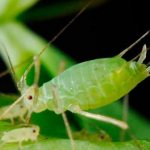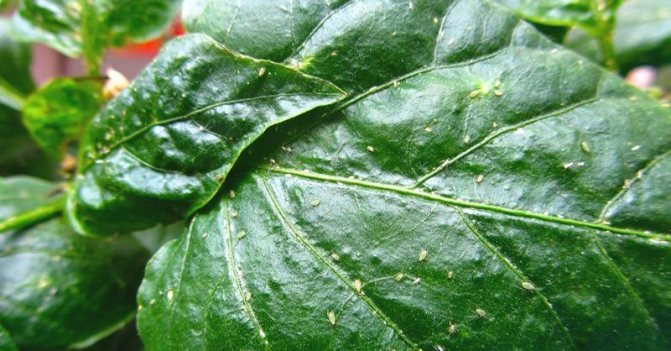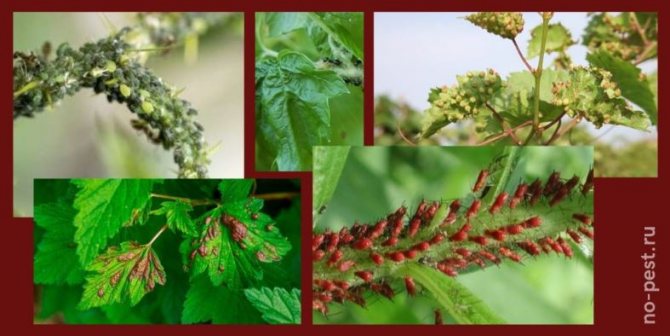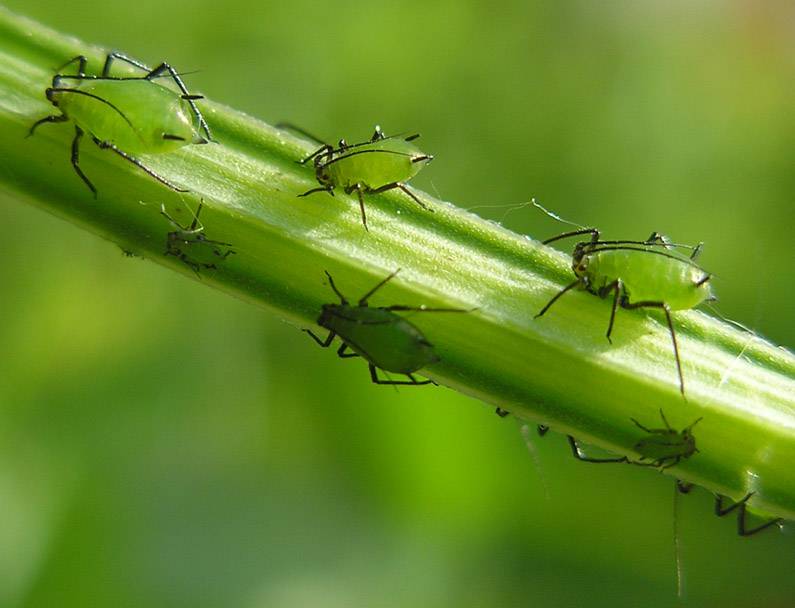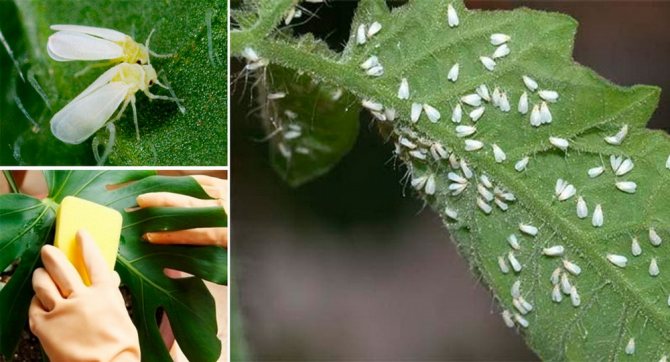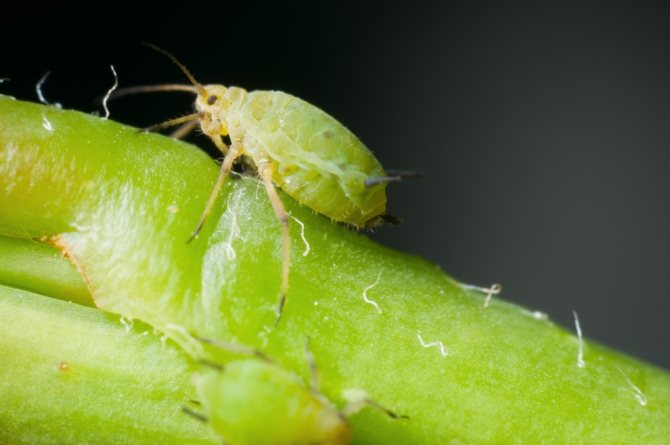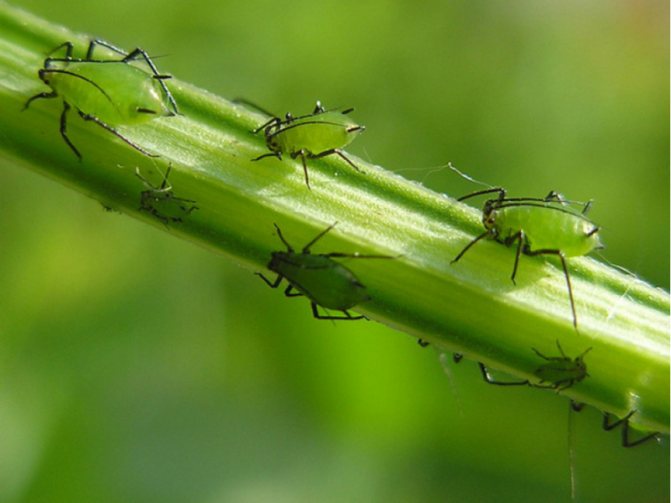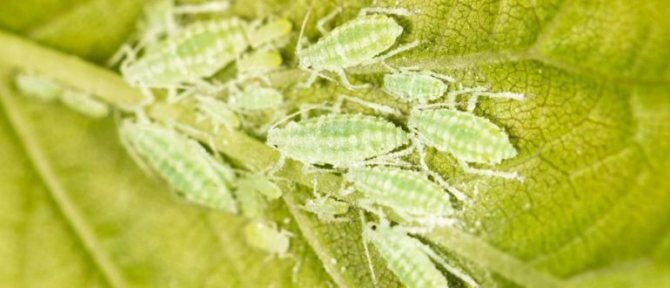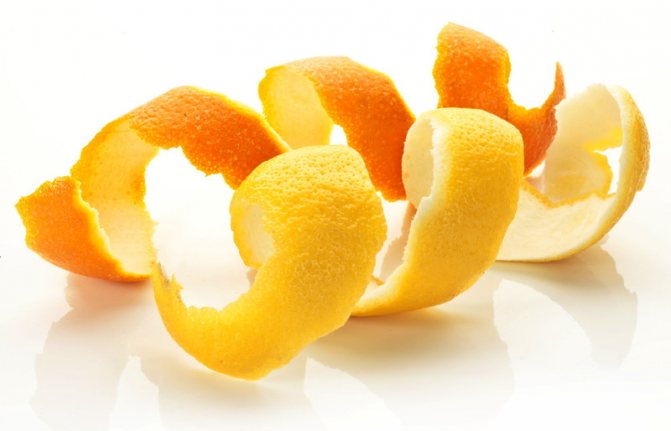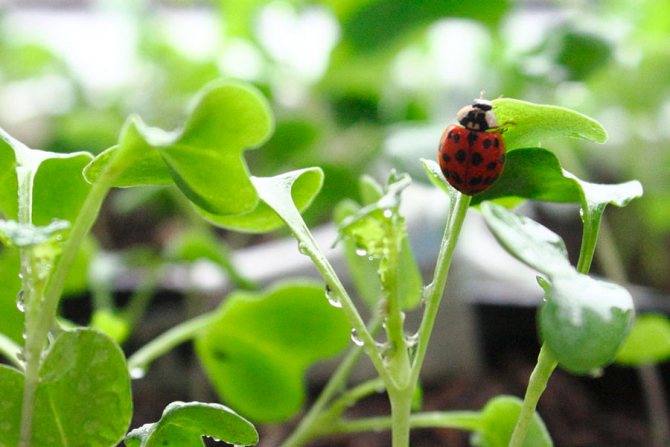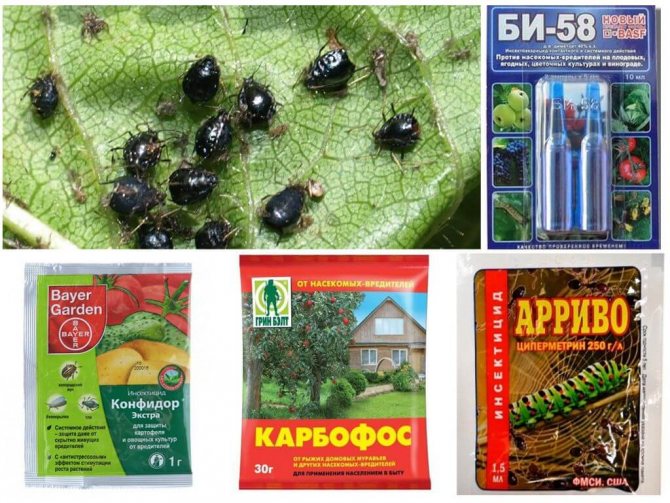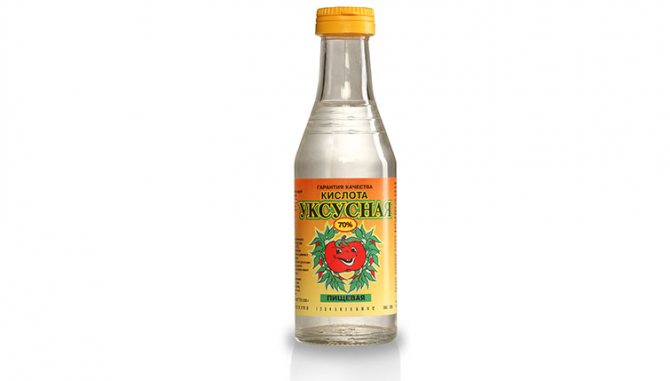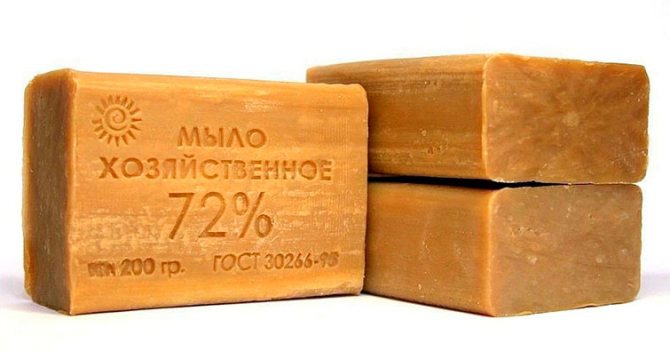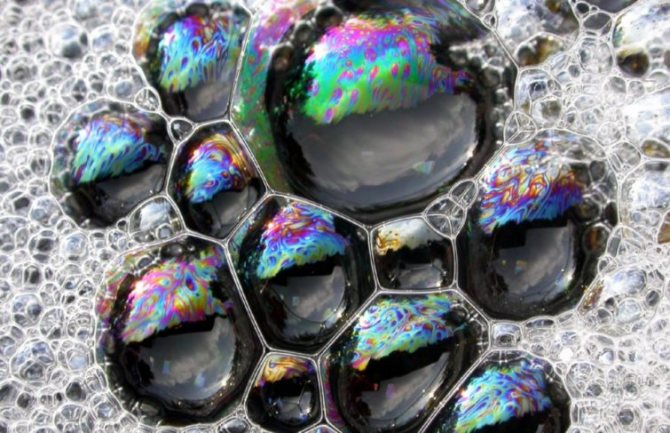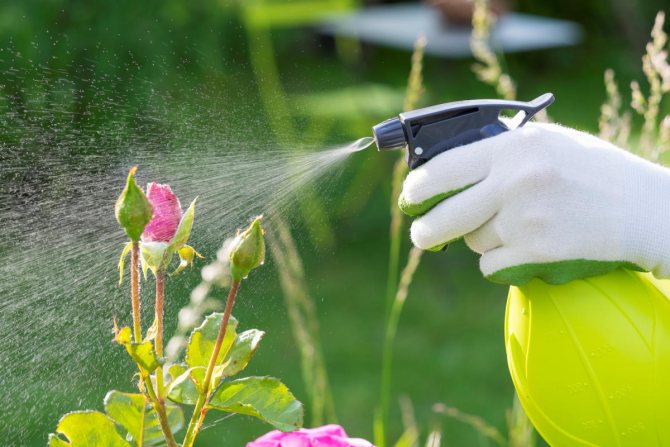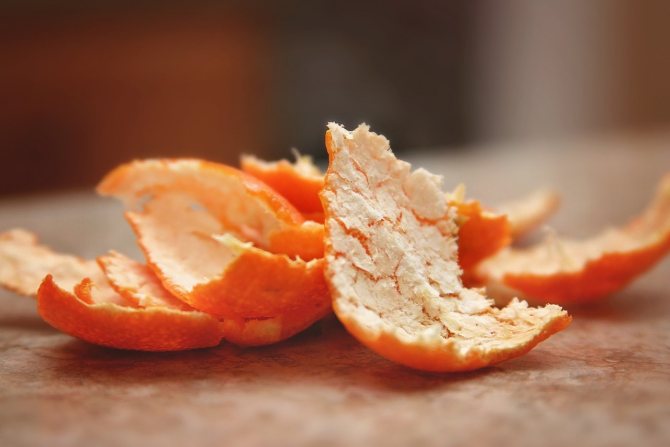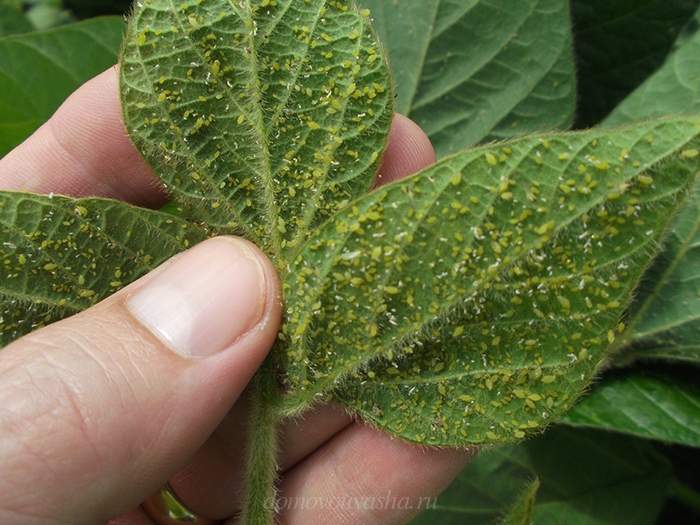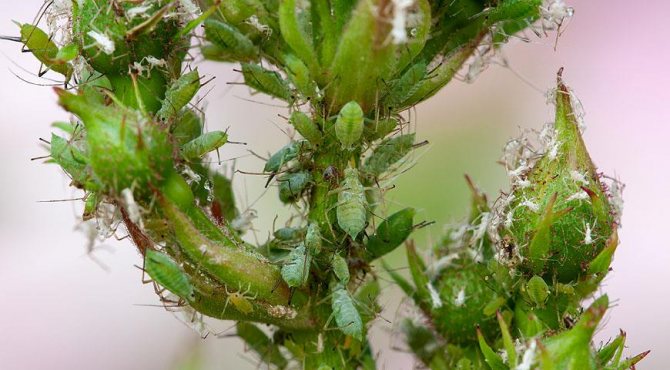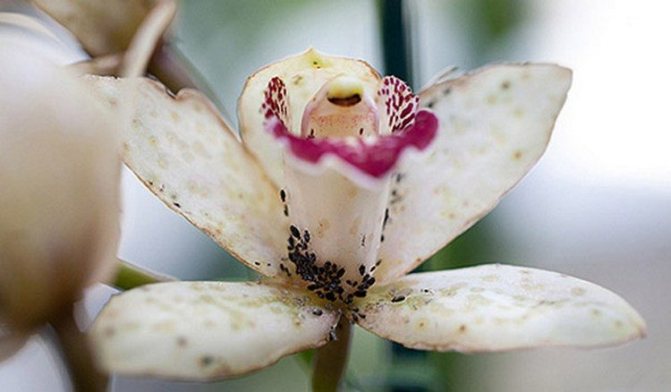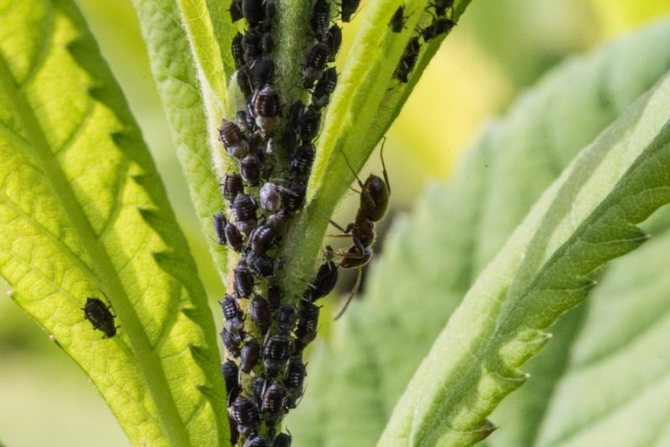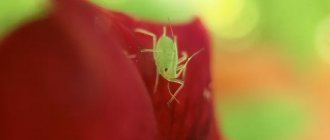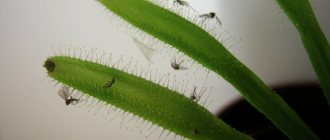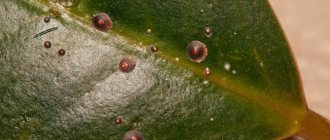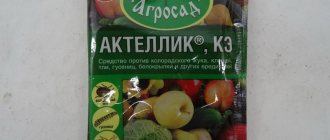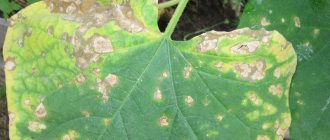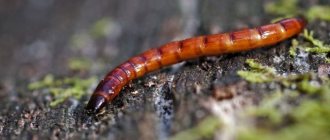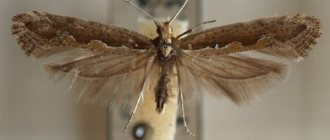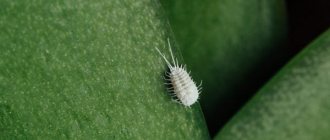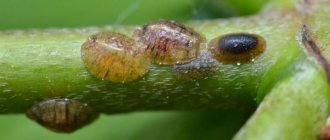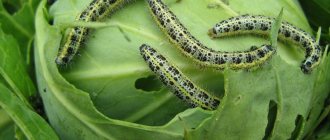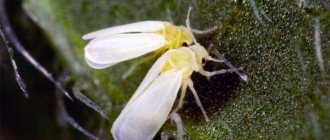Aphids are a small insect that is difficult to immediately notice, but the fruits of its life can greatly upset a grower. It weakens young shoots, is saturated with cell sap and secretes poison that pollutes the surface of the leaves and disrupts natural processes in indoor plants. How to get rid of aphids at home, we will tell you in this article.
Description of aphids and the way of their appearance in the house
Aphids are small insects with long legs and a pointed abdomen. The oblong body can be yellow, green, black or pink, but white pests are most common on indoor plants.
One female aphid can lay up to 100 eggs at a time, which in a couple of weeks turn into adults, destroying flowers. Parasites use the proboscis to suck the juice from the stems and leaves, depriving the plant of vitality and attractiveness. In addition, they often spread viral and fungal diseases (black fungus). If the necessary measures are not taken in a timely manner, the pests quickly adapt to any habitat and form numerous colonies that can destroy all the beauty on the windowsill.
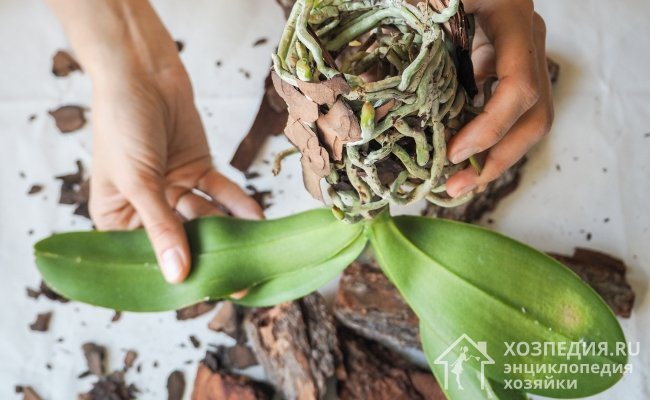
Aphids affect different types of plants, but hyacinths, chrysanthemums, hibiscus, orchids, fuchsias and cyclamens are especially susceptible to pests.
Where pests can appear in the house:
- through open windows and a balcony in the absence of mosquito nets;
- with new flowers (cut or in pots);
- from the clothes of a person;
- through the soil used for transplanting;
- carriers of the larvae can be ants that breed aphids for their own food.
To avoid the spread of aphids from a newly acquired plant to domestic ones, keep it in quarantine for several days, and also carry out preventive treatment with special insecticides.
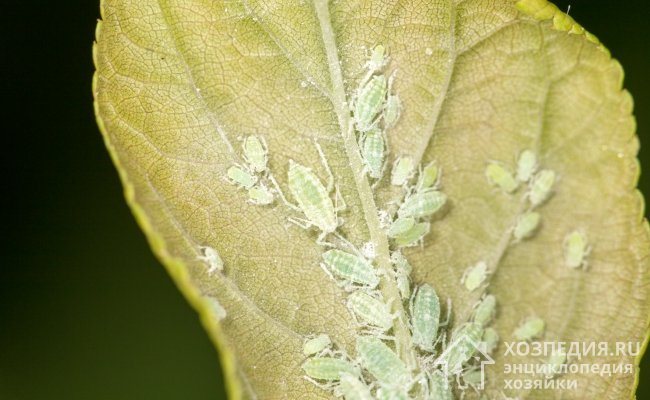

The main reason for the appearance of aphids is dry soil and high indoor temperatures.
Signs of aphid infestation - photo
You can find out about the attack of pests by looking closely at the flower. If its leaves become covered with spots and curl up into a tube, young shoots wither and dry up, buds fall off - this is a distress signal. Soon the plant will stop growing, deform and die out.
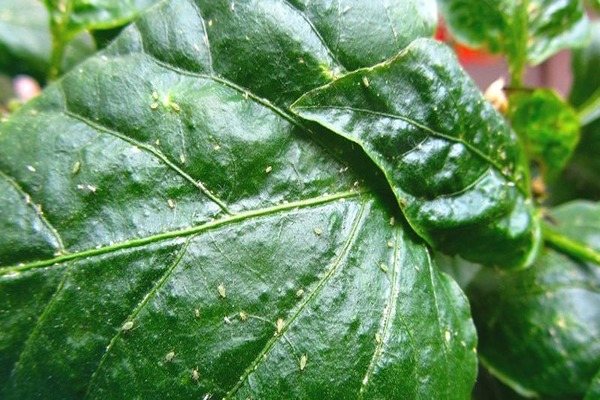

Unfortunately, at the beginning of the infection and before the signs show, it is not possible to detect insects only when the colony has already noticeably grown. Signs that aphids have started up: "pubescence" of the stems, which easily crumbles when touched, or aphid accumulation on the wrong side of the leaves. The colony looks like a bunch of small specks. If you look closely, you can see their slight movement.
Photo of what aphids look like on indoor home flowers:
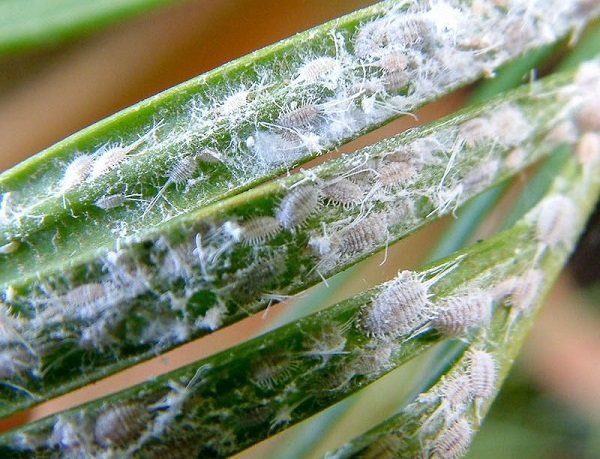

Types of aphids on flowers
In nature, there are more than 4000 species of these pests. From wild and garden plants, they willingly move to indoor plants. Most often, indoor plants are attacked by the following species:
- White aphid. Loves dicotyledonous plants, especially legumes. Winters on pistachio trees.
- Green aphids affect fruit trees: apple, plum, quince. Hibernates under the bark, near the buds.
- Black aphid. Attacks garden and ornamental plants, has a brown, blue or black color.
- Yellow aphid lives on conifers, accidentally hitting the house, and attacks indoor flowers.
- Red blood aphid. It hibernates on an elm tree, by summer it migrates to apple trees.
IMPORTANT: most often aphids on indoor flowers are white, black and green. The active growth of the colony occurs in late winter and spring.
What causes aphids on home flowers
This small and prolific insect reproduces actively throughout the warm season. Females do not need to look for a male to reproduce. This means that the entry of a single female into the house will lead to the infection of all indoor plants. It is easy for a tiny insect to get into the house even with normal ventilation of the room.
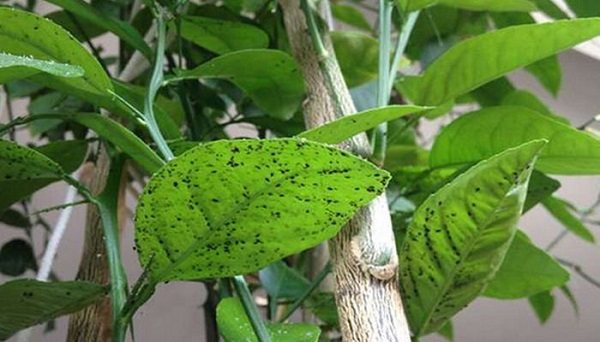

Most often, infection occurs:
- If you bought a sick flower. Parasites will rapidly migrate to neighboring plants.
- When replanting, renewing or replenishing, together with contaminated soil.
- The parasite is introduced into the house on shoes, clothes, a bouquet of garden flowers or on the hair of pets that have returned from a walk.
- From domestic ants that create entire farms of parasites for their sweet, nutritious "milk."
- When taking flower pots with home flowers to the balcony, where aphids can get into with a gust of wind or from the branches of trees growing nearby.
Signs of pests on flowers
Aphids can cause significant damage to plants, so it is important to start the fight against parasites as early as possible. To do this, you need to know the signs of the appearance of pests in the home greenhouse and periodically inspect each indoor flower for symptoms of the disease.
The first manifestations of aphid infestation:
- a sticky layer and tiny punctures appear on leaves and young shoots;
- flower buds quickly fade and fall off, not having time to bloom;
- the flower loses its attractiveness, withers and dries up;
- leaves darken and curl;
- ants appear on the windowsill, which are attracted by the waste products of aphids, which are used by insects as food.
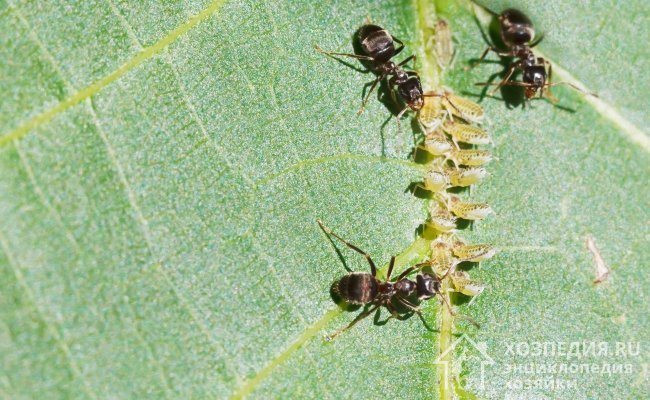

One of the signs of plant damage by aphids is the appearance of ants. Insects feed on honeydew secreted by parasites, so they are always close to them and can even add pests to flowers on their own
Why aphids are dangerous for home flowers
These insects are dangerous primarily for young plants with delicate trunks and leaves. The female of the parasite lays eggs on the back of the leaf. After the larvae hatch, they immediately begin to suck the sap from the plant. Deprived of nutrition and moisture, it sheds buds, withers and dries up within a month.
Dangerous for flowers and honeydew - the very "milk" secreted by aphids and so beloved by ants. It promotes the appearance of a sooty fungus, leading over time to the death of the plant.
Folk remedies and methods of combating aphids
You can remove aphids from indoor plants yourself, using available tools. Such methods are easy to use, affordable and absolutely safe for healthy flora, people and pets.
Houseplant rescue algorithm:
- Isolation of a sick flower, which will protect the rest from infection.
- Preventive spraying of healthy flora.
- Treatment of the affected flower in the selected way.
Folk remedies for combating aphids are presented in the table:
| Active substance | The procedure for preparing the composition | Mode of application |
| Celandine | Grind 150 g of dried raw materials or 350 g of fresh grass and pour 1 liter of water. Insist the product in the dark for 24 hours | Spray the plant with the resulting infusion three times at intervals of a day. |
| Wood ash | Mix 50 g soap, 0.5 l ash and 10 l water | With a filtered solution, process the affected leaves and shoots until the pests are completely destroyed |
| Garlic | Grind 30 g of garlic in a blender, pour 1 liter of water and leave for a day in a dark place to brew | With the resulting product, treat the flowers three times with an interval of 5 days. |
| Tomato tops | Grind 500 g of raw materials, pour 1 liter of water and boil for 30 minutes. Add 4 g of liquid soap to the cooled broth | Treat the affected plant until complete recovery. |
| Tobacco | Combine raw materials and water in a 1: 2 ratio and let it brew for 2 days | Dilute the resulting infusion with water and spray the flower. Avoid getting the compound on the soil to avoid damage to the root system |
| Bitter pepper | Grind 50 g of pepper and pour 125 ml of water. Boil the mixture for an hour and let it brew for a day. | Dilute the filtered infusion in 10 liters of water, use for spraying and watering flowers |
| Orange peels | Pour 100 g of citrus peel with water and let it brew for a couple of days in a warm place | Spray plants affected by aphids |
| Needles | Pour 500 g of pine needles with 2 liters of water and leave for a week, then strain and dilute with water in a ratio of 1: 7 | Process the flower several times with a break of 4 days |
Geranium, dill, parsley, mint or marigold will help fight aphids. Parasites cannot stand the aromas of these plants, so by placing a pot with one of them on the windowsill, you can not only get rid of pests, but also avoid their appearance in the future.
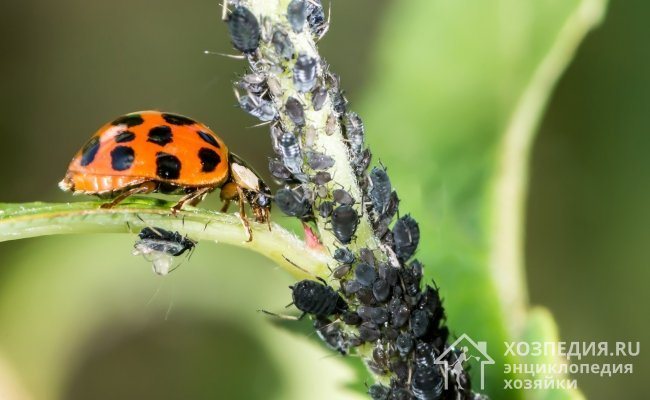

The ladybug can be used as a biological method for controlling aphids, so do not drive out the insect that has settled on the indoor flower
How to get rid of aphids on indoor plants
Whitefly on indoor plants - how to deal with it at home
The appearance of aphids on indoor plants is quite common. If pests on flowers are not noticed in time, the plant will die.
Aphids on a home rose - how to fight
The home rose is one of the favorite plants for aphids. If a pest appears on a flower, you need to immediately start doing something to get rid of it. The insects love to suck juice from young shoots and buds. As a result, the rose not only stops blooming, but also stops growing.
Symptoms of rose defeat:
- The leaves acquire a dirty tint, become sticky and become covered with a white coating, losing all their shine.
- Yellow spots appear on the surface of the leaf plate.
- Young shoots are deformed.
- The rose stops blooming even if the buds form.
Before starting treatment, you need to find out the reasons why the pest appeared on the rose and eliminate them immediately.
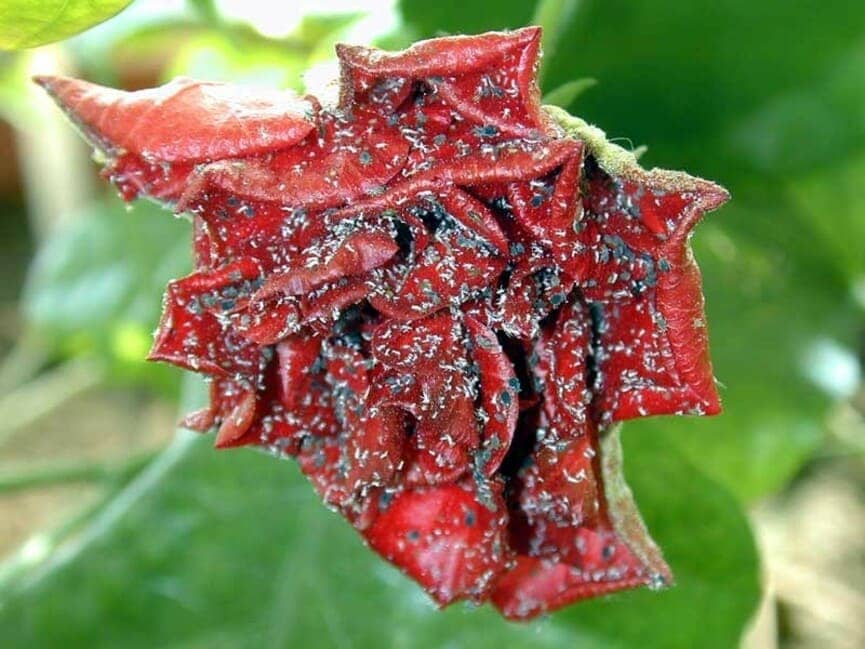

Infected home rose
Why does aphid appear on a rose:
- Excessive application of nitrogen-containing fertilizers to the soil.
- Violation of the conditions for keeping the rose.
- Failure to comply with quarantine for new plants (it is impossible to transfer indoor flowers from the street directly to the house, first they need to be treated from pests).
How to save a rose from the plague of aphids:
- Processing with potassium permanganate helps well. Dissolve a small amount of potassium permanganate in warm water and spray the rose bushes. For the complete destruction of pests, several treatments will be required.
- Tobacco powder is another powerful remedy. Processing with tobacco powder takes place in two stages. First, you need to spray the leaves with garlic infusion, a decoction of tomato tops or soapy water, or treat the foliage with chemicals. Then you need to sprinkle the soil in the pot with tobacco powder. For more effect, you can sprinkle the rose bushes themselves.
- Low toxicity drugs can be used. These are Bankol, Aktara, Mospilan, Commander. Chemicals are used in a course according to the instructions on the package. But they have a significant drawback. With frequent use, insects develop immunity to them.
- Bioinsecticides have proven themselves well. Unlike chemicals for this group of funds, aphids do not develop immunity, so you can not worry about the effectiveness.Fitoverm is suitable for processing indoor roses. You can also use Lepidocide or Gaupsin.
When growing indoor plants, it is important not only to treat them in a timely manner, but also to take preventive measures. To prevent pests from appearing on the rose, you need to regularly inspect the plant and put it under a warm shower. Anti-mosquito nets should be hung on the windows.
Important! If roses are transferred to the house for the winter, you first need to withstand quarantine and treat them from pests. Only then can the pots be put in the apartment.
Black aphid appeared on jasmine - removal methods
Indoor jasmine is another plant that aphids like to feed on. This insect can do the most harm to the flower.
Aphids on jasmine: how to treat:
- From chemicals, you can use the drug Aktara. This agent is classified as a systemic fungicide with a long-lasting effect. Pest protection lasts from 3 to 5 weeks. You can spray and water plants with Aktara. Toxic substances penetrate into the tissues of the flower. Aphids feed on sap and die. These substances do not harm the plant itself.
- Another tool is Confidor. The drug belongs to contact and systemic insecticides. Most of the insects will be destroyed if the jasmine is poured with Confidor under the root.
- All parasites will die immediately if you sprinkle jasmine with Akarin.
A simple and effective remedy is ammonia.
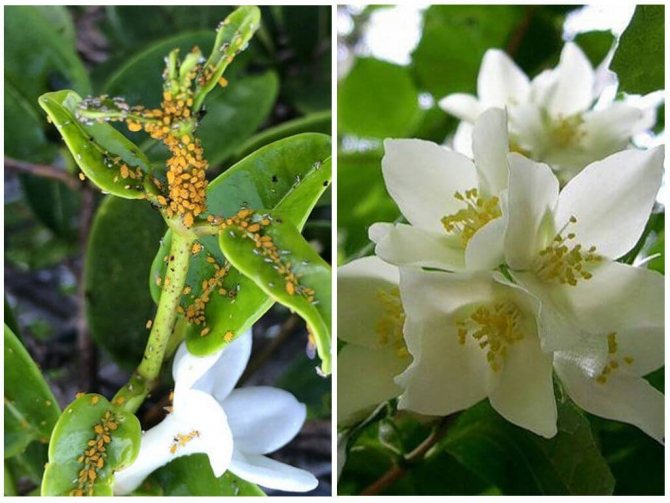

Aphids on jasmine
Jasmine processing step by step:
- Before processing, all severely damaged parts of the plant are cut off.
- Places of cuts after the removed stems are sprinkled with crushed charcoal.
- Then you can start spraying.
- In 1 liter of warm water, dilute 30 ml of ammonia and spray the solution throughout the bush.
- If the first attempt failed to destroy the aphids, the procedure should be repeated.
Note! To quickly destroy pests on indoor plants, it is best to combine several products. For example, alternate treatments with chemicals and folk remedies.
Mechanical methods of getting rid of pests
You can save indoor flowers with the help of mechanical cleaning, but this method is effective only at the initial stage of infection. To preserve the plant, remove damaged leaves, buds and shoots and rinse it daily under running water. A solution of laundry soap will help to achieve the maximum effect. Processing procedure:
- Prepare a 1: 6 soapy solution of laundry soap and water.
- Prepare the necessary attributes, put on rubber gloves.
- Soak a sponge in the solution and rub well all leaves, shoots and stems. Avoid getting the product on the soil.
- Rinse the plant with clean running water.
- Repeat the treatment daily until the parasites are completely eradicated.
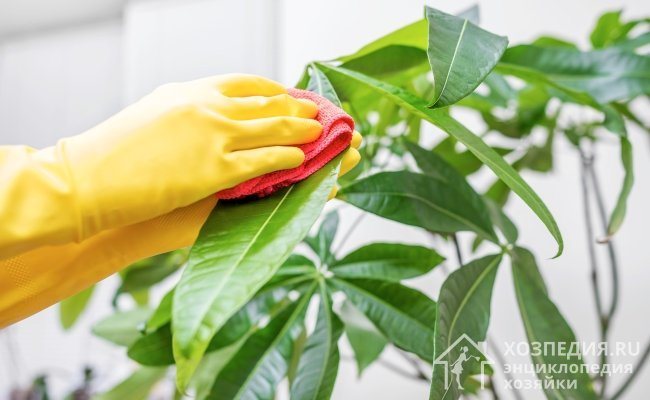

For mechanical removal of aphids, daily wipe the leaves with a damp sponge, remove the affected shoots and bathe the flowers under running water
As an alternative to soapy water, you can use rubbing alcohol - dissolve 6 tbsp in 1 liter of water. spoons of the product and wipe all the leaves. Such a composition effectively removes pests and does not damage the leaves, since ammonia quickly evaporates from the surface.
To be sure to get rid of aphids, replace the top of the soil where the eggs and larvae of the pests may be. At the same time, choose high-quality soil that has undergone a disinfection or freeze stage.
Plants, birds and insects against aphids
It so happened in nature that aphids have acquired natural enemies. We are talking about praying mantises, bugs, wasps, ladybirds. Eating plant lice is not against sparrows, tits, robins, beetles, etc. In order not to bother with pest control methods, you can shift the task "onto the shoulders" of birds, but for this you first need to do everything so that they settle on the site. This is easy to do.At the dacha, you can build feeders, drinkers, nests. You can attract insects that aphids are at odds with by planting their favorite plants (carrots, parsley).
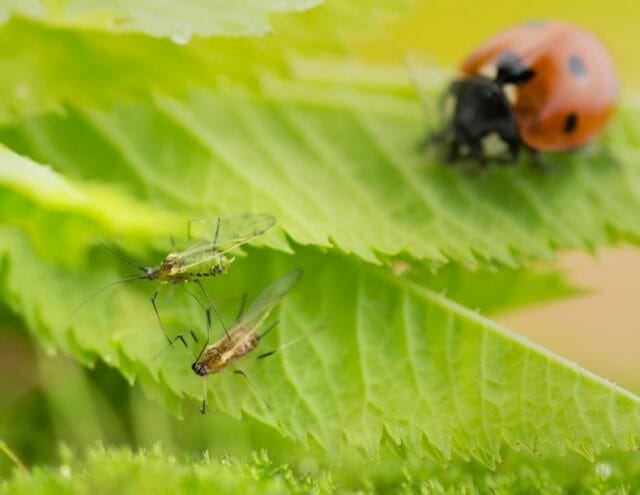

Now you know what methods are effective against aphids. With this information, you will be able to protect crops from pests.
In conclusion, I would like to add that fruit trees and shrubs are sprayed in three stages: at the time of bud formation, after they have faded, and 14 days before the fruit is cut off. You need to start processing berries before flowering and after harvesting. The last spraying of vegetables should be carried out 30 days before harvesting the fruits. If infusions based on potatoes, tomatoes, dope, henbane and tobacco were used as prophylactic agents, the fruits are allowed to be consumed 10 days after spraying.
Chemicals for the destruction of parasites
If folk remedies are ineffective, use chemicals. The choice of means depends on the degree of damage and the scale of the disaster. The most effective remedies include: "Decis", "Iskra", "Fitoverm", "Aktellik", "Confidor", "Akarin", "Karate".
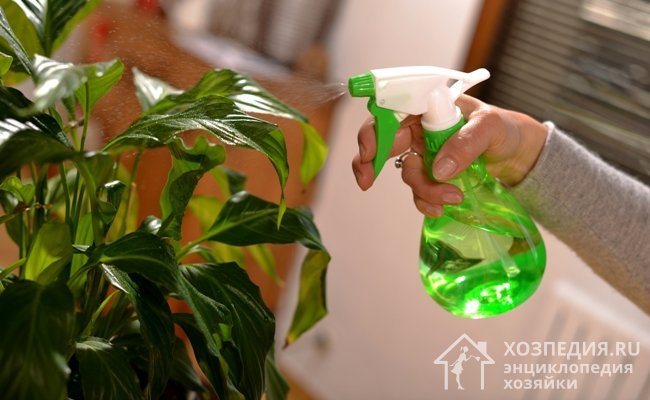

Spraying flowers with chemicals will help get rid of aphids. When working with insecticides, observe safety measures and strictly follow the instructions for the preparation
The procedure for using chemicals:
- Read the instructions for use of the product.
- Take the recommended safety precautions - wear seals and a respirator, and move pets and children out of the area. After handling, wash your hands thoroughly with a concentrated soap solution.
- Wipe the leaves and stems with a sponge dipped in soapy water and then let dry.
- Spray the flower. Carry out the treatment on the balcony on a cloudy day at a temperature of + 21 ... 25 ℃, as at a lower efficiency of the drug decreases.
- Perform preventive spraying on all plants in your home to prevent aphids from settling on them.
- Re-process the flowers several times at intervals of 5-7 days (depending on the recommendations in the instructions).
If it is not possible to save the plant, discard it to avoid contaminating other flowers.
Preventive measures
In order to reduce the likelihood of aphids getting on a houseplant, you need to follow several rules:
- be sure to disinfect the land brought from the street for indoor plants;
- use mosquito nets on windows;
- new plants in the house must be quarantined for a week in isolation from other indoor plants;
- kill ants if they appear in the house;
- a flower ruined by aphids, throw it away without regret, dispose of the substrate, disinfect the pot;
- keep geraniums (or pelargonium), marigolds on the windowsill;
- spread dry bunches of fragrant herbs (wormwood, celandine, etc.) near the flower pots;
- keep the donated cut flowers away from other flowers in the house;
- periodically inspect all plants for pest infestation;
- cut off dry leaves, buds;
- monitor temperature and humidity (heat is a friend of aphids).
Prevention of aphids
Proper care of plants and adherence to the recommended preventive measures will help to avoid the appearance of aphids:
- periodically carry out preventive treatment of plants;
- make sure you maintain the optimal temperature in the house, as insects settle in a stuffy, poorly ventilated room;
- quarantine new flowers;
- install mosquito nets on all windows in the apartment;
- do not place bouquets of cut flowers (especially chrysanthemums and roses) near indoor plants;
- Soak the new soil for transplanting for several days in the cold to destroy the larvae and eggs of the pests.
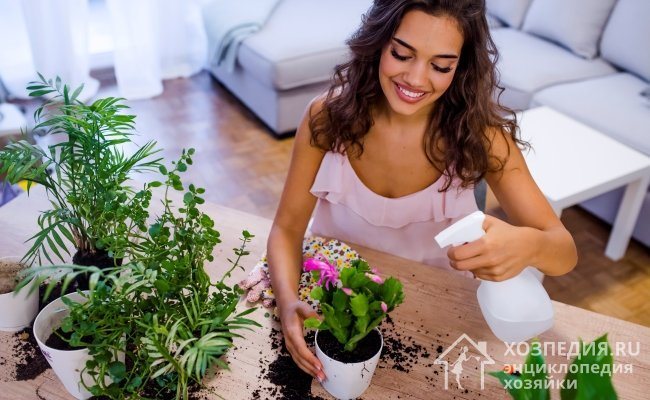

To preserve indoor flowers, provide them with proper care, regularly inspect for pests in time, and periodically carry out preventive treatment.
Maintaining a favorable microclimate in the house, proper care of plants and compliance with preventive measures will help save indoor flowers from aphids. If it was not possible to protect them from pests, start the fight at the first detection of parasites, preventing the growth of the colony. Mechanical processing, folk remedies and chemicals are capable of helping in the extermination of insects. The choice of control method depends on the scale of the disaster and individual preference.
Aphid information
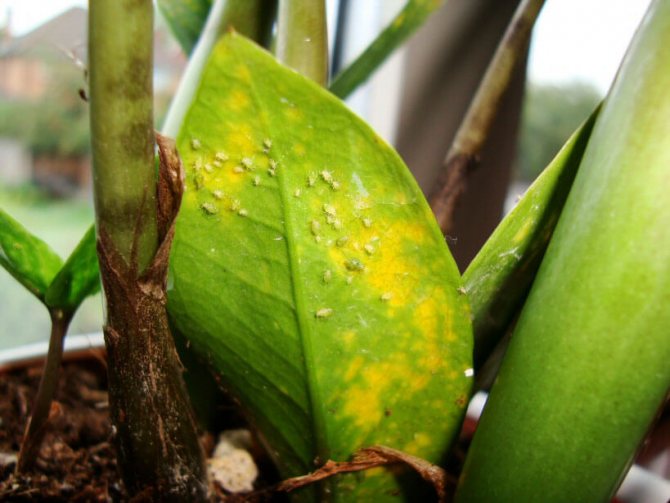

Aphids belong to the order of Hemiptera and can often be found on indoor plants. Scientists are aware of more than 4 thousand species of this tiny parasite. Only in Europe there are about 1 thousand species. The insect settles on plants and begins to actively reproduce, while feeding on the sap of the plant, which leads to serious consequences. A small colony of these parasites can destroy an indoor flower, leaving traces of their vital activity on the leaves. As a rule, the flower withers and dies. In addition, aphids are capable of carrying various viral diseases.
Basically, aphids do not grow in length more than 2-3 mm, although species are known that reach a length of about 7 mm. In this case, it all depends on the type and conditions of reproduction. Their color also depends on this, which can be white, green, yellow, pink and even black. The parasite has a special tool - the proboscis, with which it sucks the sap of the plant. During this process, a sticky, sweet liquid is released that attracts other insects such as ants, for example. Ants can create colonies of these insects to provide themselves with food for the whole winter.
Each aphid colony consists of both wingless and winged individuals. Individuals with wings contribute to the rapid spread of parasites throughout the plant. Wingless individuals reproduce within the colonies, due to pathogenesis, that is, without fertilization. When the flower begins to dry out, winged individuals begin to actively reproduce, which are able to fly from flower to flower, forming new colonies of parasites on new, still healthy plants. With the arrival of autumn, males begin to breed. Before the onset of winter, females lay eggs in various hiding places, which helps the pests to survive the winter.
If there is a lot of food, then mainly wingless individuals breed, which in a short time bring the population of the colony to 100 thousand.
Symptoms
What should you pay attention to, how to diagnose the appearance of diseases and pests? It is worth regularly inspecting the plant, not neglecting the care of it. Symptoms of parasitic insect infestation on chrysanthemums most often look like this
- With thrips, dots or spots appear on the leaves, then they turn yellow, discolor, wither, dry and fall off. The insect itself is small, with an elongated body, juveniles are yellow-beige, adults with glossy black backs, winged. You can look for them on the back of the leaves.
- With a leaf nematode, the leaves are covered with yellow-brown spots that gradually grow over the entire surface. The foliage first dies off and curls up in the lower part of the stem, then the upper shoots die. Infected bushes are destroyed.
- With aphids, the symptoms can be different, depending on the type of pest itself. Most often, the inflorescence of a plant is affected by the brown subtype, which leaves traces of its vital activity inside. The pests look like small dark brown or black beetles. The greenhouse aphid is pink or green in color, is located in colonies on the stem or in the lower part of the leaf, sucks out juices, leading to wilting and death of the flower.
- When a spider mite is affected, traces of cobwebs can be seen on the back of the leaves, the leaves of the plant dry, the shoots wither and turn yellow. In hot weather, the parasite is especially active.
- When leafhoppers or slobbering pennits appear, foamy traces of insect activity appear on the plant. It feeds exclusively on flower sap.
- When meadow bugs attack, the buds disappear, they are deformed, like shoots, and the development of chrysanthemum is disrupted.
We suggest you familiarize yourself with: How to make a rat trap: 110 photos of the best homemade rat traps
Signs of infection and consequences
How to understand that a plant is infected with a pest? There are several characteristic symptoms.
The first thing you will probably notice is the deformation of the leaves. Brown spots will start to appear on them.
This is a sure sign that the flower is losing juice and drying out. This color change will spread further and further throughout the leaf area. At the same time, it will begin to roll up into a tube, after which it will fall off. But if you carefully examine the plants, you will notice the result of the aphids earlier. We are talking about the punctures themselves, which the insect makes. They are tiny, so it's not easy to see them. The disease can also manifest itself on flowers. The buds also dry out quickly, lose their shape, and crumble. If new flowers appear on an already diseased plant, then they are much smaller in size than those that grew earlier. Also, due to the secretion and accumulation of sap around the flower, ants will begin to gather - they are much more noticeable than aphids. But, again, with the most careful examination, you can find the pest itself. The most common in apartment conditions are black and white aphids.
The consequences of the appearance of this pest are obvious - without treatment, the plant will soon die due to the loss of juice and the spread of the fungus.

